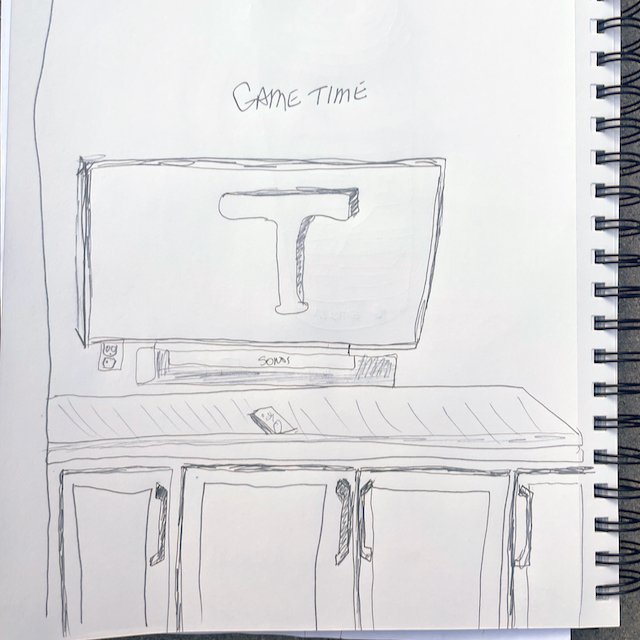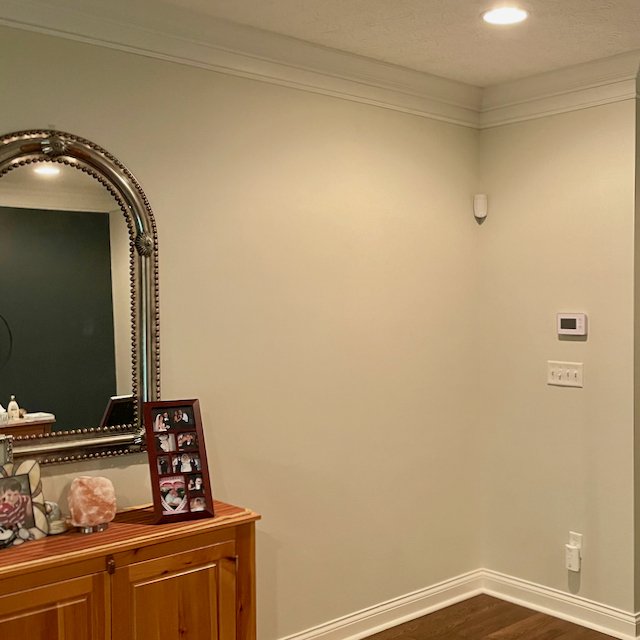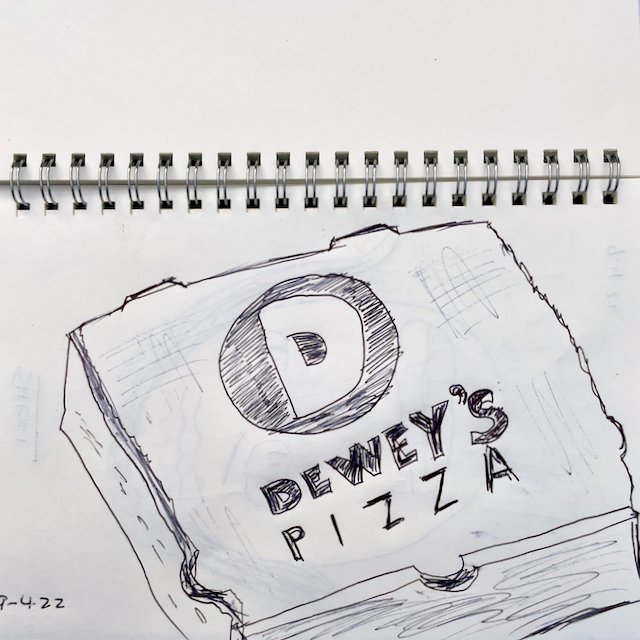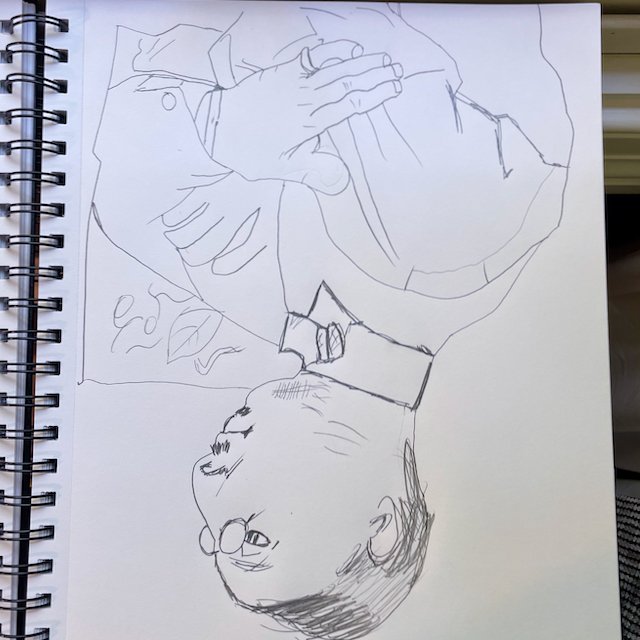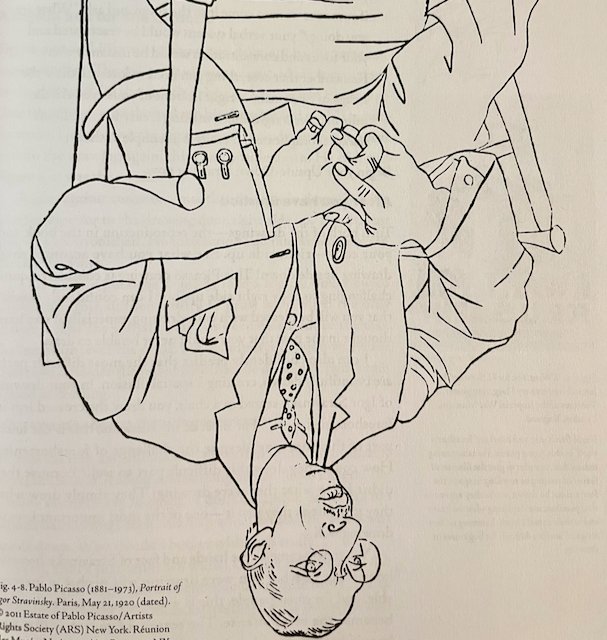Live Portrait Model
Drawing a two-dimensional portrait out of a book is tough, but a three-dimensional model is even more challenging.
You have the left brain interfering and dictating what you should see and draw, and your right brain trying to draw what you see. Putting all the learnings into practice is challenging. Therefore, this is a learned skill, not a God-given talent you have or don’t have.
It is tough, but I am continuing to work through it. I think I have made a 1% improvement from yesterday’s drawing to today.
The Office Corner
Today’s sketch focuses again on the perspective skill. Using the picture plane, I drew my Basic Unit (the Formula One photography on the left of the corner) on my picture plane and then transferred that to my shaded paper.
From there, I drew the remaining elements. I’m happy with how I could draw the view to scale and didn’t run out of space on the page. Most everything in the view was captured to scale.
1% improvement!
The Corner
Today’s sketch focused on sighting the angles in a room corner with just a pencil. First, I drew the central vertical line, which always remains vertical regardless of the viewing angle. And then, using my pencil, I visually saw the angle for the floor and ceiling with the vertical corner.
Getting good and working these angles and tricking my left brain, which is convinced the lines are straight.
Focused on constant improvement day by day,
Pizza Box
Originally I sketched my wife at dinner. But unfortunately, I didn’t get clearance to post that drawing! So I drew the take-home pizza box—a simple box with the logo. Good sketch.
It pays to take a sketchbook with you wherever you go. I keep an inexpensive book in the car for just these occasions.
Let me know what you think in the comments below.
The Chair
Today’s sketch was a tough one. Trying to sketch the chair while getting the perspective and depth was hard. I tried to use the picture plane but couldn’t keep it still. I tried to focus on the negative space but couldn’t get that clear. Just an overall tough sketch today.
I’m not discouraged at all. This drawing shows where I need to put the work in. Nothing comes easy!
Picture Plane Practice - Hand
This is another hand sketch with the picture plane. Practice brings repetition, and I enjoy focusing on the lines, angles, and negative space, not that I am drawing a hand. It works as I focus on using my right brain and excusing my left dominant brain.
Enjoy
Hand–Modified Pure Contour Drawing
With today’s assignment, we used the hand from the picture plane and essentially drew that image onto sketching paper. I shaded the paper using charcoal and then drew the hand off the original drawing on the picture plane.
This was the first time using charcoal and another skill that I could develop.
It adds dimensionality to the drawing. Also, the details of the lines and shadows of my hands are seen.
A great drawing that I am happy with.
The Hand on the Picture Plane
Today’s assignment was to draw my hand in foreshortened view using a glass picture plane. This technique/learning tool was created back in the 1400s. This tool helps you see and draw a three-dimensional item on a two-dimensional plane.
It is unbelievably easy to trace my hand on the glass. It was interesting to me how the glass eliminated the stress and angst of trying to capture the depth of my hand. Instead, I focused on the lines and outside map of my hand and watch—a great learning experience.
I picked up a discount picture frame and a few cheap mats at the craft store—an inexpensive, practical glass picture plane.
Pure Contour Drawing - The Hand
Pure Contour Drawing – The Hand
An essential drill to help people develop their drawing skills was introduced in 1941 by Kimon Nicolaides; contour drawing. This drill helps build your skill in seeing the edges and contours of your subject.
In Drawing on the Right Side of the Brain, Betty Edwards modified the contour drawing into the pure contour drawing. Her drill has you looking at a subject, in this case, my left hand, and placing my other hand and pencil on the paper. I started the timer for five minutes and ONLY looked at my left hand. I followed the crevices and contours of my hand with my eyes and allowed my drawing hand to “follow” my eyes on the page.
Your outcome is a record of your perceptions of the creases in your palm, not a beautiful sketch of your hand.
Upside Down Man for the Third Time
Repetition. One more upside-down drawing to work on the right side of the brain. Progress.
Small wins include feeling more comfortable with the fingers. This is big as even upside down. My brain knows I am drawing fingers. It is much harder to trick my brain into focusing on lines and angles.
Another Upside-Down Man
Today’s sketch was another where you look at the image upside down. This exercise from the book Drawing on the Right Side of Brain reduces mental conflict. Drawing upside down uses the gap between recognition (knowing you are drawing a man) and drawing upside down, so you focus on lines, angles, and circles. In other words, use the right side of your brain.
This Drawing is from page 53 of Drawing on the Right Side of Brain and is by Pablo Picasso of the Russian Composer Igor Stravinsky.
It was enjoyable, and I focused on the lines and angles, not calling out a head, face, or hands. It works.
Circles
I’m just not happy with the proportions of the top circles on my cups and glasses. They are too round and not oblong enough to convey the depth of the cup. So I did a few pages of circles to practice and get the muscle memory down. The last few seemed to be much better, and my lines were strong and more confident.
Vases and Faces
Today’s sketch is another drill to try and disconnect your left brain from what you are drawing.
The image is both two facing profiles and a vase. As you draw, you call out the components of the faces, and it helps trick your mind.
The Pencil Sharpener
Today’s subject has nice lines and a bit of 3d to it. The pencil sharpener on my desk was filled a bit with shavings. I tried to show the transparent section. I’m also going to start including review notes. After I finish the sketch, I review it and note anything for future improvement.
I hope you enjoy it.
My Hand
The second baseline drawing and a good barometer of my progress is drawing my hand. I did an original hand drawing when I started this journey back on July 20th. I have progressed.
In everything you do, evaluating where you are to where you were is good. Celebrate your progress against yourself, not against unrealistic expectations or even against others.

